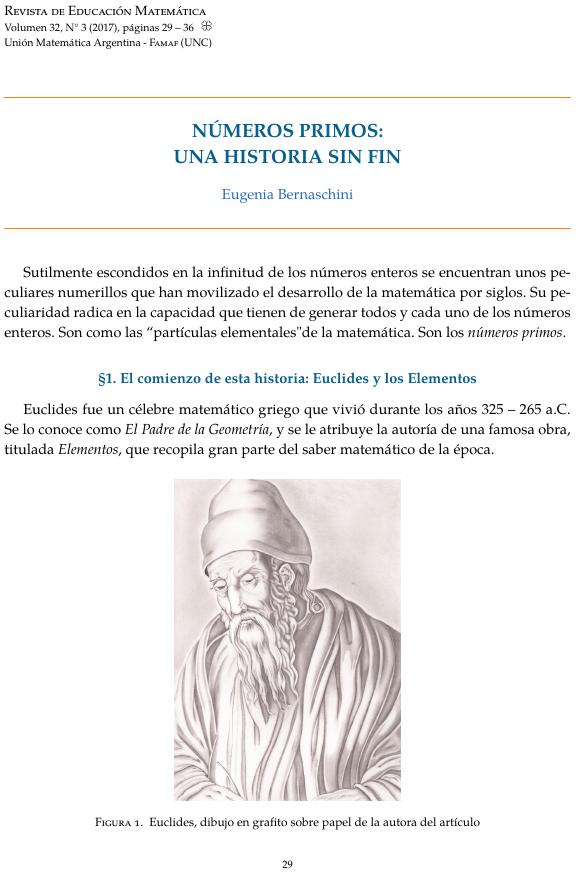NÚMEROS PRIMOS: UNA HISTORIA SIN FIN
DOI:
https://doi.org/10.33044/revem.18734Palabras clave:
primos, factorizaciónResumen
.Descargas
Referencias
[1] Euclides. Elementos. Libros I-XIII. Vol. I, II y III. Trad. M.L. Puertas Castaños. Notas: L. Vega Reñón. Madrid: Editorial Gredos. 1991.
[2] Boyer. Carl B. Boyer, Uta C. Merzbach. A History of Mathematics. New York: Wiley, 1991.
[3] Manindra Agrawal, Neeraj Kayal, Nitin Saxena. PRIMES is in P, Ann. Math. 160, no. 2, (781–793) 2004.
[4] https://es.wikipedia.org/wiki/Test_de_primalidad_de_Fermat.
[5] Peter Shor. Polynomial-Time Algorithms for Prime Factorization and Discrete Logarithms on a Quantum Computer. SIAM Journal on Computing, Vol. 26,No. 5, (1484–1509), 1997.
[6] https://en.wikipedia.org/wiki/Formula_for_primes.
[7] James Jones, Daihachiro Sato, Hideo Wada, Douglas Wiens Diophantine representation of the set of prime numbers. American Mathematical Monthly 83, no. 6, (449–464) 1976.
[8] http://www.bbc.com/news/technology-35361090.
[9] Andrew Granville. Harald Cramér and the distribution of prime numbers, Scandinavian Actuarial Journal 1, (12–28) 1995
[10] Harald A. Helfgott Major arcs for Goldbach’s theorem, 2013, arXiv:1305.2897.
[11] Harald A. Helfgott. Minor arcs for Goldbach’s problem, 2012, arXiv:1205.5252.

Descargas
Publicado
Número
Sección
Licencia
Derechos de autor 2017 Eugenia Bernaschini

Esta obra está bajo una licencia internacional Creative Commons Atribución-CompartirIgual 4.0.
Aquellos autores/as que tengan publicaciones con esta revista, aceptan los términos siguientes:
- Los autores/as conservarán sus derechos de autor y garantizarán a la revista el derecho de primera publicación de su obra, el cuál estará simultáneamente sujeto a la Atribución-CompartirIgual 4.0 Internacional (CC BY-SA 4.0), que permite:
- Compartir — copiar y redistribuir el material en cualquier medio o formato
- Adaptar — remezclar, transformar y construir a partir del material
- La licenciante no puede revocar estas libertades en tanto usted siga los términos de la licencia
- Los autores/as podrán adoptar otros acuerdos de licencia no exclusiva de distribución de la versión de la obra publicada (p. ej.: depositarla en un archivo telemático institucional o publicarla en un volumen monográfico) siempre que se indique la publicación inicial en esta revista.
- Se permite y recomienda a los autores/as difundir su obra a través de Internet (p. ej.: en archivos telemáticos institucionales o en su página web) después del proceso de publicación, lo cual puede producir intercambios interesantes y aumentar las citas de la obra publicada. (Véase El efecto del acceso abierto).








